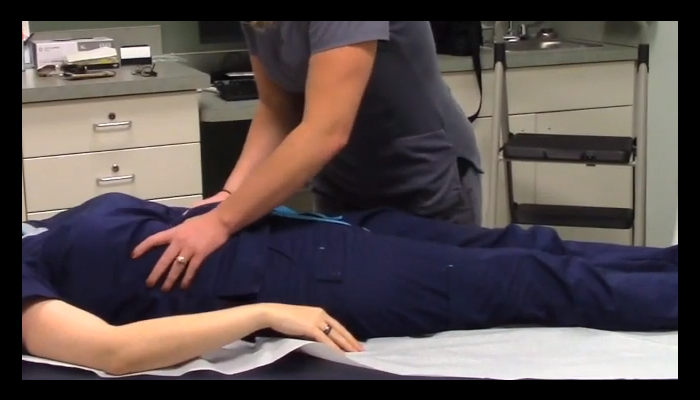Check out the RESULTS from the May 2019 Technique of the Month!
- With no audio, 18% (13/71) of respondents indicated their 1st choice to classify the demonstrated technique was a Lymphatic Drainage Technique, while 21% (15/71) indicated their 1st choice was Myofascial Release. 44% (30/69) of respondents indicated their 1st, 2nd, or 3rd choice was Lymphatic Drainage Technique.
- With audio, 22% (11/50) of respondents indicated their 1st choice to classify the demonstrated technique was a Lymphatic Drainage Technique, while for each of 3 techniques (Muscle Energy, Myofascial Release, and Soft Tissue or Progressive Inhibition of Neuromuscular Structures), 18% (9/50) indicated that as their 1st choice. 52% (26/50) of respondents indicated their 1st, 2nd, or 3rd choice was Lymphatic Drainage Technique.
- 50% (25/50) of respondents indicated that they currently use Lymphatic Drainage Techniques in their practice.
Respondents’ 1st choice to classify the demonstrated technique

What did respondents have to say when they learned the technique demonstrator classified the technique as a Lymphatic Drainage Technique?
- Respondents who Agreed with Classification of the Demonstrated Technique
- “In my opinion this technique could be used for inhibition of the diaphragm too.”
- “The script suggested to me that the primary goal of the technique was a release of the diaphragm, even though a commensurate action would be on the lymphatic system by creating pressure differentials between the abdominal and thoracic cavities.”
- “Before hearing it, I couldn’t tell she was on the diaphragm… makes more sense now… “
- “I would agree that it is often used in the context of lymphatic drainage, but I am not sure that should be a technique / modality category, any more than visceral describes everything in the abdomen or that OCF is the category for Galbraith, for example.”
- “While I agree it is a lymphatic technique, diaphragm release in this fashion is also described as LAS by the Lippencotts.”
- Respondents who Disagreed with Classification of the Demonstrated Technique
- “Looks like diaphragm pump”
- “It didn’t occur to me that lymphatics could be separate from myofascial techniques. I overlooked what I wasn’t expecting.”
- “The use of the breath against the operator’s pressure led me to think it might be an MET technique that recruited muscles of respiration. I suppose any techniques applied with a view to improving lymphatic drainage (particularly on and around the diaphragm, since it’s such a key area for lymph) can be considered ‘lymphatic drainage techniques’ so the absence of any stated intention confused me.”
- “Indirect positioning of diaphragm. Patient movement against operator force.”
- “The diaphragm is a muscle and as the patient inhales they are resisting the direction the doc is taking it –> muscle energy. Also I somehow missed lymphatic technique in the list or I would have picked that as #1 and ME as #2.”
- “Targeted tissue is diaphragm – a muscle. The diaphragm is a muscle which is involved in many ways – not only lymphatic drainage.”
- “Looked like she was working on the rib cage or diaphragm.”
- “I knew it was a lymphatic drainage technique (diaphragm pumping) but I’ve got mistaken with the other descriptions.”
- “Compression of the rib cage made me think this was a combined technique using some MFR in addition to respiratory assist doming of the diaphragm. I guess I modify the way I do this technique so I forget the way it is taught in the text.”
- “I approach the body using the 5 different models of osteopathic treatment. While diaphragmatic release can improve lymphatics, if it is affecting the rib motion, it can be part of a biomechanical model or other model as well.”
- “Would have called it ‘doming diaphragm’ or diaphragm release.”
- “In our clinic we use a very similar technique to redome and manipulate the diaphragm, a visceral technique.”
- “It looked like the operator was treating the abdominal diaphragm.”
- “[From] the spoken description, it seems to me the focus lays more on the diaphragmatic muscle as a muscle technique then the breathing. although it influences the lymphatic system.”
- “Could have been nearly anything – wasn’t aware of diagnosis…was it to treat diaphragm or lower rib cage tension, perhaps?”
- “Looks exactly as a diaphragm release with subtle rebound in the end. Which IS a lymphatic technique- but just as well a diaphragm release for any other reason… Just didn’t place it as an ONLY lymphatic drainage technique.”
Did you miss your chance to review the May 2019 Technique of the Month video? Check it out and see whether you agree that the technique demonstrated falls into the category of Lymphatic Drainage Techniques.
What do you think about the classification of this demonstrated technique as a Lymphatic Drainage Technique? Let’s talk about this below!

